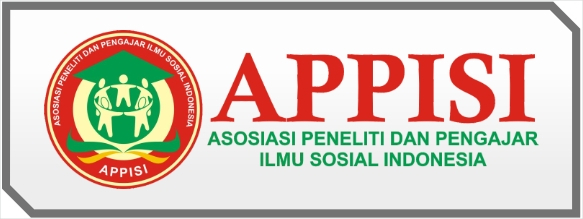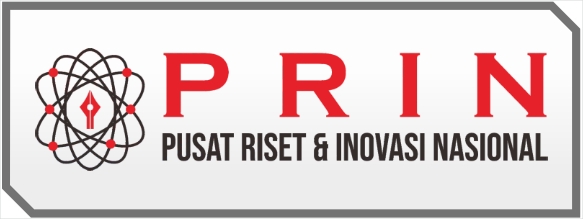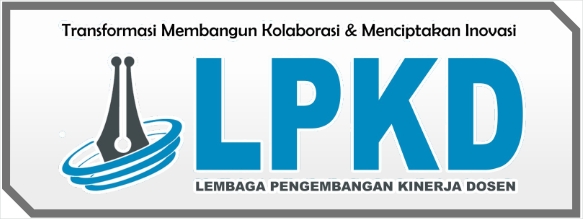Dunia Anomali Dominasi Wanita: Pesan Moral dalam Iklan Djarum 76 versi Jin Takut Istri
DOI:
https://doi.org/10.55606/cendikia.v3i2.1178Keywords:
World of Anomaly, Female Domination, Advertising, Fear of WifeAbstract
This study aims to reveal the anomaly of female domination: the moral message in Djarum 76 advertisement version of the genie is afraid of the wife, by representing something that is not visible on the surface. This article is a qualitative descriptive research type with Roland Barthes' semiotic analysis based on Stuart Hall's representation theory. Primary data through observation of text and audio-visual images from advertisements, and secondary data from relevant literature, then analyzed based on the concept of The Codes of Television. The results of the study show: in the Djarum 76 advertisement, the version of the genie is afraid of his wife, builds the image that men are afraid of their wives, which can be seen from the activities, sounds, expressions, camera techniques, and existing ideology. This anomaly is a reality that occurs a lot in the reality of society where a household is dominated by the wife. The research implication, narrative experience brings the consumer's mood to the narrative which is carried as a moral message. More specific research is needed to reveal the atmosphere of the relationship built on the research focus.
References
Alah, M. A., Abdeen, S., & Selim, N. (2022). Healthy Minds for Healthy Hearts: Tackling Stress-Induced Cardiac Events During the FIFA World Cup 2022. Vascular Health and Risk Management, 18, 851—856. https://doi.org/10.2147/VHRM.S390549
Ali, M. J., Sinha, P., & Bothra, N. (2022). Lacrimal drainage anomalies in 3p deletion syndrome. Orbit (London), 1–3. https://doi.org/10.1080/01676830.2022.2144385
Angeren, J. van, Vroom, G., McCann, B. T., Podoynitsyna, K., & Langerak, F. (2022). Optimal distinctiveness across revenue models: Performance effects of differentiation of paid and free products in a mobile app market. Strategic Management Journal, 43(10), 2066–2100. https://doi.org/10.1002/smj.3394
Apreno, R., & Noermanzah, N. (2020). Ideologi Kapitalisme dalam Iklan Rokok Djarum 76 Edisi Wani Piro: Kajian Analisis Wacana Kritis. Silampari Bisa: Jurnal Penelitian Pendidikan Bahasa Indonesia, Daerah, Dan Asing, 3(1), 86–97. https://doi.org/10.31540/silamparibisa.v3i1.882
Apriati, Y. (2019). Refresentasi maskulinitas dalam iklan rokok dan susu L-Men. Jurnal Pendidikan Sosiologi Antropologi, 1(2), 60–75. https://doi.org/10.20527/padaringan.v1i2
As’ad, M. (2017). Islam dan Moral Bangsa. Nizham Journal of Islamic Studies, 2(2), 1–26. https://e-journal.metrouniv.ac.id/index.php/nizham/article/view/858
Aung Thin, M. D. (2020). Hybridity, National Identity, and the Smartphone in the Contemporary Union of Myanmar. M/C Journal, 23(5), 1–10. https://doi.org/10.5204/mcj.1679
Azevedo, V., & Hoegner, C. (2023). Enhancing stock market anomalies with machine learning. Review of Quantitative Finance and Accounting, 60(1), 195–230. https://doi.org/10.1007/s11156-022-01099-z
Azzahra, M. H. (2012). “Pemaknaan Iklan Rokok Djarum 76 Versi ‘Jin Takut Istri’ (Studi Semiotik Terhadap Iklan Rokok Djarum 76 Versi ‘Jin Takut Istri’ di Televisi).” Skripsi, Universitas Sahid Surakarta.
B.H.S., A., & Noviyanti, N. S. (2021). Negara dan Permasalahan State Building di Abad XXI. Global: Jurnal Politik Internasional, 7(2), 114–126. https://doi.org/10.7454/global.v7i2.455
Beitelmal, A. H., Gonzalez-Cruz, J. E., & Fountoukis, C. (2023). Impact of Sustainable Buildings in Arid Environment on the Indoor and Outdoor Air Quality: Workshop Report. ASME Journal of Engineering for Sustainable Buildings and Cities, 4(1), 011101. https://doi.org/10.1115/1.4056545
Bhangu, S., Provost, F., & Caduff, C. (2023). Introduction to qualitative research methods - Part 1. Perspectives in Clinical Research, 14(1), 39–42. https://doi.org/10.4103/picr.picr_253_22
Bhuiyan, M. M. H. (2022). Gender Identity Construction in TV Adverts: A Multimodal Discourse Analysis. International Journal of Social Science and Human Research, 5(5), 1658–1665. https://doi.org/10.47191/ijsshr/v5-i5-12
Calvo-Bascones, P., Voisin, A., Do, P., & Sanz-Bobi, M. A. (2023). A collaborative network of digital twins for anomaly detection applications of complex systems. Snitch Digital Twin concept. Computers in Industry, 144, 103767. https://doi.org/10.1016/j.compind.2022.103767
Cartes-Barroso, M. J. (2022). Audiovisual journalism and technological innovation. The QR codes on Spanish television. VISUAL Review. International Visual Culture Review / Revista Internacional de Cultura, 11(4), 1–13. https://doi.org/10.37467/revvisual.v9.3687
Chauke, O. R. (2022). The Fall of Man: Thematic Survey on Professional Ethics and Integrity in M.M. Mabuza’s Nyuku wa Mbyana. Journal of Pharmaceutical Negative Results, 13(01), 1383–1387. https://doi.org/10.47750/pnr.2022.13.S01.164
Christanti, C., & Wicandra, O. B. (2021). Kesetaraan Gender dalam Iklan-Iklan Televisi Indonesia. Nirmana, 18(2), 66–73. https://doi.org/10.9744/nirmana.18.2.66-73
Coffee Jr., J. C., Lowenstein, L., & Rose-Ackerman, S. (2021). Knights, Raiders, and Targets: The Impact of the Hostile Takeover. New York, NY: Oxford University Press.
Cui, R., Cui, Q., Li, G., Huangfu, P., & Zhou, Y. (2023). Low-velocity anomaly in the lithosphere of eastern Central Tianshan imaged with seismic waveform fitting. Tectonophysics, 846, 229677. https://doi.org/10.1016/j.tecto.2022.229677
Curott, N. A., & Snow, N. A. (2023). Nudging to Prohibition? A Reassessment of Irving Fisher’s Economics of Prohibition in Light of Modern Behavioral Economics. Journal of the History of Economic Thought, 45(1), 117–136. https://doi.org/10.1017/S1053837222000062
Das, T., Shukla, R. M., & Sengupta, S. (2022). What Could Possibly Go Wrong?: Identification of Current Challenges and Prospective Opportunities for Anomaly Detection in Internet of Things. IEEE Network, 1–7. https://doi.org/10.1109/MNET.119.2200076
Dayuoman, I. A. N. S. (2022). Aktualisasi Diri Dan Media Sosial (Dramaturgi Kaum Milenial Dalam Media Sosial Tiktok). Widya Duta: Jurnal Ilmiah Ilmu Agama Dan Ilmu Sosial Budaya, 17(2), 89–98. https://doi.org/10.25078/wd.v17i2.1655
Dempsey, C. (2020, August 18). “South Atlantic Anomaly: A Growing Dent in the Earth’s Magnetic Field.” Planetary Geography. https://www.geographyrealm.com/
Doyle, L., McCabe, C., Keogh, B., Brady, A., & McCann, M. (2020). An overview of the qualitative descriptive design within nursing research. Journal of Research in Nursing, 25(5), 443–455. https://doi.org/10.1177/1744987119880234
Du, K., Huddart, S., & Jiang, X. D. (2023). Lost in standardization: Effects of financial statement database discrepancies on inference. Journal of Accounting and Economics, 75(2–3), 101573. https://doi.org/10.1016/j.jacceco.2022.101573
Dvornik, A., & Bakarikova, Z. (2022). Seasonal anomalies in radioactivity of the near-surface atmosphere in the Chernobyl-affected area of Belarus. Environmental Science and Pollution Research, 29(51), 77553–77564. https://doi.org/10.1007/s11356-022-21239-1
El Ali, M. S. (2022). Revisiting al-Tabarī on Maqtal ’Alī ibn Abī Tālib: An Early Report from Historical Learning to Practical Prescription. Journal of Arabic Literature, 53(3–4), 265–574. https://doi.org/10.1163/1570064x-12341461
Esiaba, G. E., Chukwu, A., Ezike, E. O., & Obite, C. P. (2022). Social-Demographic and Cultural Determinants of Nigerian Women’s Age at First Birth Using the Log Logistics Accelerated Failure Time Model. International Journal of Business Strategy and Social Sciences, 5(1), 22–33. https://doi.org/10.18488/171.v5i1.3039
Fernando, J., & Marta, R. F. (2018). Komodifikasi Budaya Pria Jawa di Iklan Djarum 76 Versi “Om Jin Buat Zaskia Gotik Jatuh Cinta.” Ultimacomm, 10(1), 53–72. https://doi.org/10.31937/ultimacomm.v10i1.883
Gao, X., & Wang, Y. (2023). Mining the Short Side: Institutional Investors and Stock Market Anomalies. Journal of Financial and Quantitative Analysis, 58(1), 392–418. https://doi.org/10.1017/S0022109022000527
Gautam, S., & Jeong, H. S. (2019). Intimate partner violence in relation to husband characteristics and women empowerment: Evidence from Nepal. International Journal of Environmental Research and Public Health, 16(5), 709. https://doi.org/10.3390/ijerph16050709
Gichamo, B. W. (2023). Traditional Ethics for Intercultural Dialogues in Ethiopia: Anecdotes from the Oromo, Amhara, and Gurage Peoples’ Moral Languages. Philosophia (United States), 50(5), 1–22. https://doi.org/10.1007/s11406-023-00624-1
Girgis, K. M., Hada, T., & Matsukiyo, S. (2020). Solar wind parameter and seasonal variation effects on the South Atlantic Anomaly using Tsyganenko Models. Earth, Planets and Space, 72(1), 100. https://doi.org/10.1186/s40623-020-01221-2
Godino, J. D., Burgos, M., & Gea, M. M. (2022). Analysing theories of meaning in mathematics education from the onto-semiotic approach. International Journal of Mathematical Education in Science and Technology, 53(10), 2609–2636. https://doi.org/10.1080/0020739X.2021.1896042
Goziyah, G., & Mawarni, D. (2021). Wacana Kritis Iklan Rokok Djarum 76 Ditelevisi. Literasi : Jurnal Bahasa Dan Sastra Indonesia Serta Pembelajarannya, 5(2), 165–17. https://doi.org/10.25157/literasi.v5i2.5493
Gultom, R. A. T. (2022). Dari mata turun ke hati: Mengembangkan sikap menghargai perbedaan dalam bingkai moderasi beragama. KURIOS, 8(1), 260–268. https://doi.org/10.30995/kur.v8i1.300
Gunadi, I., Suseno, J. E., Khuriati, A., Hersaputri, M., & Putranto, A. B. (2022). Penentuan Curah Hujan Berdasarkan Input Cuaca Menggunakan Metode Logika Fuzzy Mamdani. Jurnal Pengabdian Vokasi, 2(2), 155–159. https://doi.org/10.14710/jpv.2021.13424
Hamali, S., & Sikap Remaja, A. (2014). Anomali Sikap Remaja dalam Beragama. Al-Adyan: Jurnal Studi Lintas Agama, 12(1), 1–20. https://doi.org/10.24042/ajsla.v9i1.1411
Heinrich, M., Geiser, C., Zagorscak, P., Burns, G. L., Bohn, J., Becker, S. P., Eid, M., Beauchaine, T. P., & Knaevelsrud, C. (2023). On the Meaning of the “P Factor” in Symmetrical Bifactor Models of Psychopathology: Recommendations for Future Research From the Bifactor-(S−1) Perspective. Assessment, 30(3), 487–507. https://doi.org/10.1177/10731911211060298
Hermanto, M. (2017). Wacana Lisan dalam Iklan Djarum 76: Kajian Ancangan Etnografi Komunikasi. Unmuh Jember, 2(1), 34–43.
Heurich, A., & Coghlan, J. (2021). The Canberra Bubble. M/C Journal, 24(1), 2749. https://doi.org/10.5204/mcj.2749
KBBI. (2023). Kamus Besar Bahasa Indonesia (KBBI) Online. https://kbbi.web.id/
Khondker, H. H. (2019). The impact of the Arab Spring on democracy and development in the MENA region. Sociology Compass, 13(9), e12726. https://doi.org/10.1111/soc4.12726
Khoury, A., Gannot, G., & Oron, A. (2023). Trigger Finger Due to Anomaly of Lumbrical Insertion. JBJS Case Connector, 13(1), e22.00504. https://doi.org/10.2106/jbjs.cc.22.00504
Ko, J., & Comuzzi, M. (2022). Keeping our rivers clean: Information-theoretic online anomaly detection for streaming business process events. Information Systems, 104(2), 101894. https://doi.org/10.1016/j.is.2021.101894
Koşaroğlu, S., Kamacı, Z., Erdoğan, S., Bektaş, Ö., & Büyüksaraç, A. (2022). Determination of historical graves by ground penetrating radar method: Sakarya Field Battle (August 23–September 13, 1921, Turkey). Australian Journal of Forensic Sciences, 54(6), 842–860. https://doi.org/10.1080/00450618.2021.1921270
Kurniawan, F. E., & Margiansyah, D. (2019). Aktivisme Gerakan Keagamaan dalam Konteks Kebudayaan : Antara Penegakan Syariat dan Anomali. Jurnal Sosiologi Reflektif, 14(1), 41–57. https://doi.org/10.14421/jsr.v14i1.1605
Lee, E., & Kim, B. (2020). Analysis on the Book Cover Design using Roland Barthes’ Semiotics. Journal of Digital Convergence, 18(3), 357–362. https://doi.org/10.14400/JDC.2020.18.3.357
Li, S., Li, Y., Zhang, Y., Zhou, Z., Guo, J., & Weng, A. (2023). Remnant of the late Permian superplume that generated the Siberian Traps inferred from geomagnetic data. Nature Communications, 14(1), 1311. https://doi.org/10.1038/s41467-023-37053-3
Liu, H., Qin, L. W., Li, R., Zhang, C., Al-Sheikh, U., & Wu, Z. X. (2019). Erratum: Reciprocal modulation of 5-HT and octopamine regulates pumping via feedforward and feedback circuits in C. elegans. Proceedings of the National Academy of Sciences of the United States of America, 116(14), 7107–7112. https://doi.org/10.1073/pnas.1906704116
Martin, J. M. (2023). Facing into the Blizzard: Resiliency and Mortality of Native and Domestic North American Ungulates to Extreme Weather Events. Diversity, 15(1), 1–11. https://doi.org/10.3390/d15010011
Mathewson, S. (2022, July 6). “Weird behavior of Earth’s magnetic field over South Atlantic dates back 11 million years.” Www.Space.Com. https://www.space.com/
Merzdorf, J. (2020, August 14). “NASA Researchers Track ‘Dent’ in Earth’s Magnetic Field.” NASA. https://www.nasa.gov/
Mićović, B., Leontijević, B., Dopsaj, M., Janković, A., Milanović, Z., & Garcia Ramos, A. (2023). The Qatar 2022 World Cup warm-up: Football goal-scoring evolution in the last 14 FIFA World Cups (1966–2018). Frontiers in Psychology, 13, 954876. https://doi.org/10.3389/fpsyg.2023.954876
Mitak, C. N. C. (2017). Wacana Iklan Televisi Rokok Djarum 76 Versi “ Pengin Eksis ”: Analisis Tanda Menurut Roland Barthes. Jurnal Ilmiah Kebudayaan SINTESIS, 11(2), 95–107. https://e-journal.usd.ac.id/index.php/sintesis/article/viewFile/1733/1353
Moretó, A. (2021). Huppert’s conjecture for character codegrees. Mathematische Nachrichten, 294(11), 2232–2236. https://doi.org/10.1002/mana.202000568
Muhrim Djakat, Misbahuddin, M., & Kurniati, K. (2023). Changing the Paradigm of States In The Rabic Middle East Region Brings Authoritarianism Towards Democracy. International Journal of Social Science, 2(5), 2115–2122. https://doi.org/10.53625/ijss.v2i5.4819
Nadirin, A. (2022). Kontroversi Tanggal Wafat Imam Ali Ra dan Tinjauannya dalam Perspektif Astronomi Islam. AL - AFAQ : Jurnal Ilmu Falak Dan Astronomi, 4(1), 51–64. https://doi.org/10.20414/afaq.v4i1.4213
Nicholaus, I. T., Lee, J. S., & Kang, D. K. (2022). One-Class Convolutional Neural Networks for Water-Level Anomaly Detection. Sensors, 22(22), 8764. https://doi.org/10.3390/s22228764
Nikolić, P. K., & Bertin, G. (2023). AI.R Taletorium: Artificial Intelligence 1001 Cyber Nights. Artnodes, 31(2), 1–10. https://doi.org/10.7238/artnodes.v0i31.402821
Nilsson, A., Suttie, N., Stoner, J. S., & Muscheler, R. (2022). Recurrent ancient geomagnetic field anomalies shed light on future evolution of the South Atlantic Anomaly. Proceedings of the National Academy of Sciences of the United States of America, 119(24), e2200749119. https://doi.org/10.1073/pnas.2200749119
O’Rourke, A., & Theodoraki, E. (2022). The FIFA World Cup Qatar 2022 Sustainability Strategy: Human Rights Governance in the Tripartite Network. Frontiers in Sports and Active Living, 4, 809984. https://doi.org/10.3389/fspor.2022.809984
Occean, J. R., Thomas, N., Lim, A. C., Lovett, S. M., Michael-Asalu, A., & Salinas-Miranda, A. A. (2021). Prevalence and Factors Associated With Intimate Partner Violence Among Women in Haiti: Understanding Household, Individual, Partner, and Relationship Characteristics. Journal of Interpersonal Violence, 36(23–24), 11356–11384. https://doi.org/10.1177/0886260519898443
Odyurt, U., Pimentel, A. D., & Gonzalez Alonso, I. (2022). Improving the robustness of industrial Cyber–Physical Systems through machine learning-based performance anomaly identification. Journal of Systems Architecture, 131(2), 102716. https://doi.org/10.1016/j.sysarc.2022.102716
Pratama, N. M., Pradekso, T., & Manalu, S. R. (2022). Pengaruh Peer Pressure, Keluarga Yang Merokok, Sikap Pada Perilaku Merokok, Dan Terpaan Iklan Rokok Terhadap Keinginan Merokok Pada Remaja. Interaksi Online, 10(3), 84–95. https://ejournal3.undip.ac.id/index.php/interaksi-online/article/view/34342/0
Putu, N., Lestari, E. B., Jayendra, K., Putra, D., Tinggi, S., & Bali, D. (2019). Representasi Budaya Populer Pada Iklan Djarum 76 Versi Jin Online. SENADA (Seminar Nasional Manajemen, Desain Dan Aplikasi Bisnis Teknologi), 2, 223–229. https://eprosiding.idbbali.ac.id/index.php/senada/article/view/138
Rais, H. M. R., Antariskia, C., & Imanda, M. R. (2021). Representasi Lelaki Ideal dalam Iklan Djarum 76 Versi Pengen Ganteng Tahun 2010. Jurnal Audiens, 3(1), 72–83. https://doi.org/10.18196/jas.v3i1.11793
Razavi, S. M. H., Alavi, S. H., & Loghmani, M. (2023). Paradigm Model of Emergence Typology of Anomalies and Corruption in Sport Hierarchical Levels in Iran with Emphasis on Human Resources. Asian Journal of Sports Medicine, 14(1), e118533. https://doi.org/10.5812/asjsm-118533
Riauan, M. A. I., Sari, G. G., Aziz, A., Prayuda, R., & Sikumbang, A. T. (2020). Refleksi Anomali Makna Perilaku Merokok Di Kalangan Dosen Universitas Islam Riau. Bricolage : Jurnal Magister Ilmu Komunikasi, 6(2), 207–249. https://doi.org/10.30813/bricolage.v6i02.2177
Satrya P., R. (2012). “Dekonstruksi Gender pada Iklan Televisi (analisis semiotika terhadap iklan Djarum 76 versi “jin takut istri”). Artikel Ilmiah, Universitas Jenderal Soedirman.
Sazali, H., Batubara, C., & Nurasiah, N. (2019). Women in Anomaly Communication of Religious Development in Indonesia: Study in Yogjakarta. Proceedings of the 1st Aceh Global Conference (AGC 2018), 129–135. https://doi.org/10.2991/agc-18.2019.20
Septiantri, S. P. D. (2013). “Representasi Wanita Jawa Dalam Iklan Rokok Di Televisi Analisis Semiotik pada Iklan Rokok Djarum 76 Versi Jin Takut Istri.” Skripsi, Universitas Sahid Surakarta.
Setyawan, B. W. (2019). Akulturasi Budaya Islam-Jawa dalam Pementasan Kesenian Ketoprak. Dance and Theatre Review, 2(1), 25–34. https://doi.org/10.24821/dtr.v2i1.3297
Sharp, E. A., & Munly, K. (2022). Reopening a can of words: Qualitative secondary data analysis. Journal of Family Theory and Review, 14(1), 44–58. https://doi.org/10.1111/jftr.12443
Shiotani, M., & Yamaguchi, K. (2022). Research on an Anomaly Detection Method for Physical Condition Change of Elderly People in Care Facilities. Advanced Biomedical Engineering, 11, 10–15. https://doi.org/10.14326/abe.11.10
Smith, J. C. (2022). Social Factors in Language Change and Variation. In The Cambridge Handbook of Romance Linguistics. Cambridge University Press. https://doi.org/10.1017/9781108580410.036
Spanos, I., Kucukvar, M., Bell, T. C., Elnimah, A., Hamdan, H., Al Meer, B., Prakash, S., Lundberg, O., Kutty, A. A., & AlKhereibi, A. H. A. (2022). How FIFA World Cup 2022TM can meet the carbon neutral commitments and the United Nations 2030 Agenda for Sustainable Development?: Reflections from the tree nursery project in Qatar. Sustainable Development, 13(1), 203–226. https://doi.org/10.1002/sd.2239
Suija, K., Mardo, L. A., Laidoja, R., Nahkur, S., Parvelo, A., & Kalda, R. (2022). Experiences and expectation with the use of health data: a qualitative interview study in primary care. BMC Primary Care, 23(1), 159. https://doi.org/10.1186/s12875-022-01764-1
Sumadi, E. (2018). Anomali pendidikan karakter. Tarbawi : Jurnal Pendidikan Islam, 15(2), 21–34. https://doi.org/10.34001/tarbawi.v15i2.846
Tošic, A., & Vicic, J. (2021). Use of Benford’s law on academic publishing networks. Journal of Informetrics, 15(3), 101163. https://doi.org/10.1016/j.joi.2021.101163
Widyaningrum, G. L. (2020). “Medan Magnet Bumi Melemah, Satelit dan Pesawat Luar Angkasa Alami Gangguan.” National Geographic. https://nationalgeographic.grid.id/
Wijaya, E., & Ekawati, Y. (2021). Penerapan Metode Six sigma dan Perancangan Alat Bantu untuk Menurunkan Tingkat Kecacatan pada Produksi Rokok SKT PT. XYZ. Jurnal Ilmiah Teknik Industri, 4(1), 20–29. https://doi.org/10.24912/jitiuntar.v9i1.8823
Zhang, H., Lin, J., Hua, J., Gao, F., & Tong, T. (2022). Data Anomaly Detection for Bridge SHM Based on CNN Combined with Statistic Features. Journal of Nondestructive Evaluation, 41(1), 28. https://doi.org/10.1007/s10921-022-00857-2






















